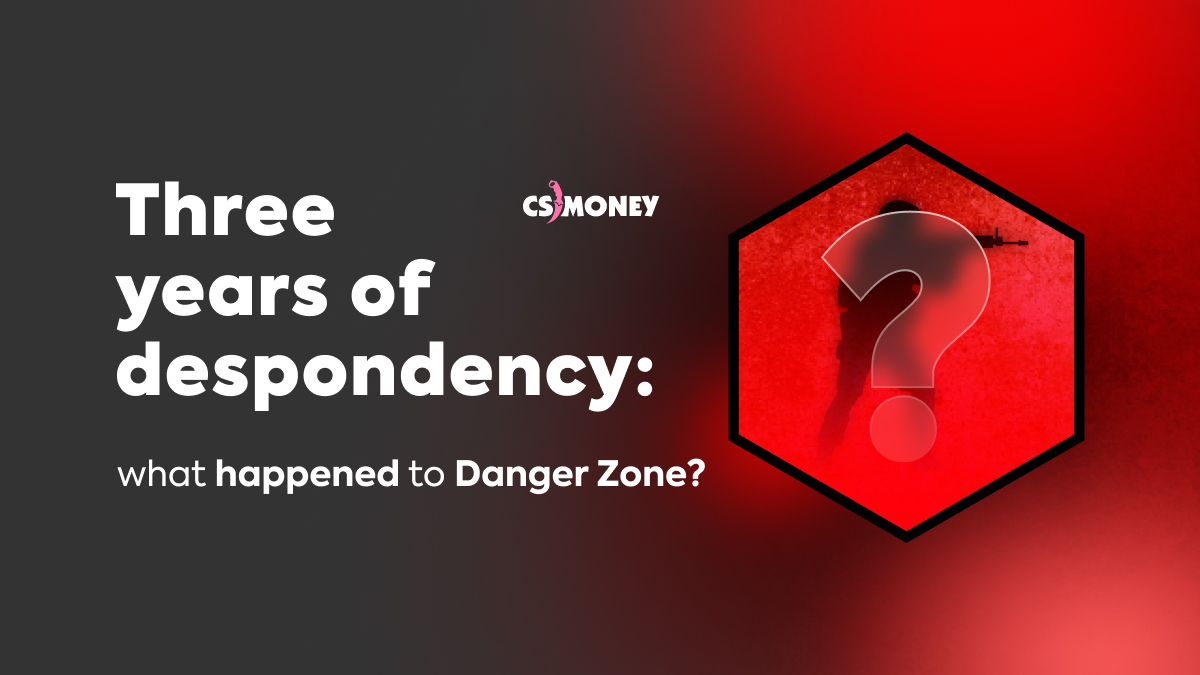
The other day, the Battle Royale mode in Counter-Strike: Global Offensive turned three years old. And odds are, you haven’t even played it this year. Today, the CS.MONEY Blog will try and explain the crisis of Danger Zone and the particular problems around this mode. Let’s roll!
A bit of history
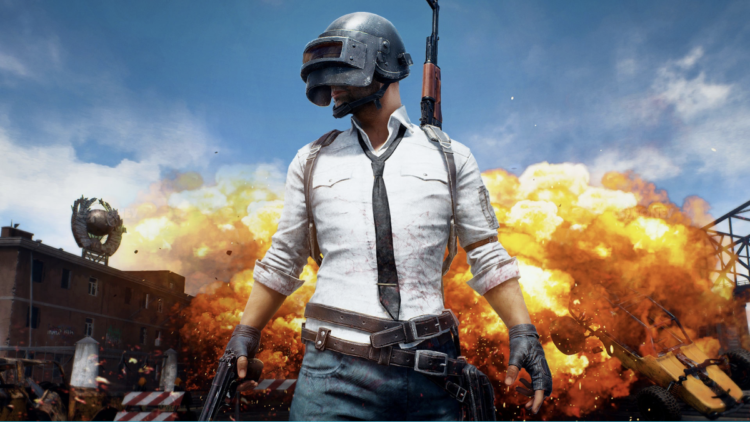
At the beginning of 2018, the Battle Royale genre enjoyed its halcyon days. Suddenly, everyone realized this was the new trend that begged for new games. It all started with PUBG: BATTLEGROUNDS, known at the time as PUBG. Over one year, from early 2017 to early 2018, this crude, freezing, laggy mess (hardware regardless) made a journey from complete obscurity to the most popular game on Steam.
PUBG didn’t even compete with Valve’s flagships — Dota 2 and CS:GO were left far behind. In January 2018, the Battle Royale game reached the three-million-players-online mark on Steam, becoming an unqualified leader and community favorite. Over time, however, the love that came so quickly faded away just as rapidly. But at the time, the formula for success was obvious to all: you just have to make your own Battle Royale.
Counter-Strike: Global Offensive was having a rough time then. Although the game was still incredibly popular in absolute terms, with peak online stats exceeding 600,000 players daily, the overall trend was very disappointing. Since April 2016, the game consistently lost online players, month after month, with only the peaks in January making the overall picture less dire.
2018 is very representative in this regard. After starting with a peak of 700,000 online players in January, Counter-Strike: Global Offensive had lost nearly 300,000 players daily by the end of August. That was a huge loss! What’s worse, the downward trend in the online audience continued. Valve needed to take action.
Free fight to the last man
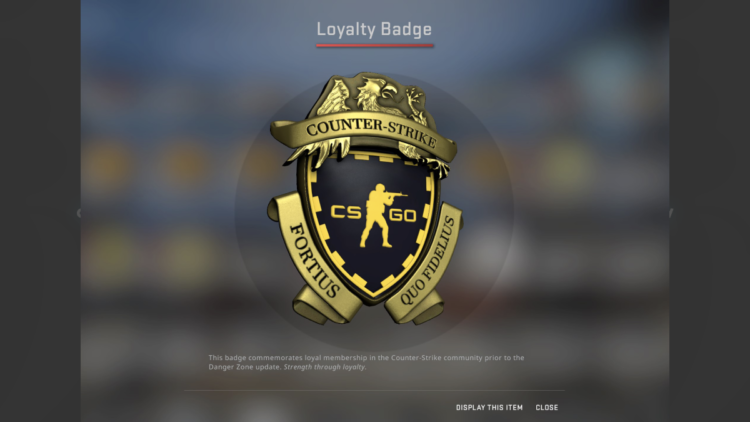
CS:GO delivered its response on December 6, 2018. Two changes occurred on that day. First, the game became free for all. Instead of the paywall which was supposed to protect the game’s community from an influx of cheaters, the company decided to apply something along the lines of a shadowban system.
The company introduced several player separation mechanics at once. Prime Status, Trust Factor, and the existing VAC worked as a united whole in the crusade against cheaters. Even though many in the community don’t think so, Valve’s approach was actually successful on a global scale. The transition to a free-to-play distribution model did little damage to the quality of the matches in Counter-Strike: Global Offensive.
The second change was the emergence of an entirely new game mode: Danger Zone. This was the unique version of a Battle Royale experience in Counter-Strike: Global Offensive. Thanks to the peculiarities of the gameplay, it turned out to be quite distinctive, and therefore interesting.
Danger Zone isn’t just «another Battle Royale»
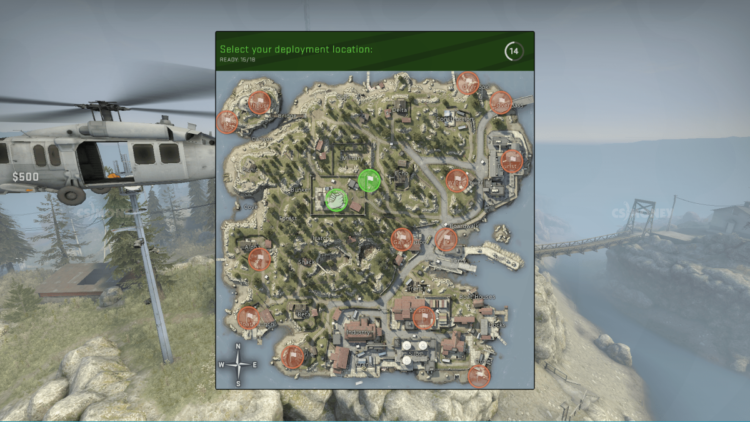
Against the background of PUBG, which was the premier Battle Royale at the time, Danger Zone looked pretty uncommon. Instead of a huge island with lots of empty space and more or less free choice of starting location, the Battle Royale mode from Valve offered an extremely compact location. There’s almost no empty space. On the contrary, the points of interest are close to each other, and you can walk from one to the other in 20–30 seconds.
The mode has other unique features as well. For example, the presence of an economy system. Today, it’s not surprising: APEX, Call of Duty Warzone, and Fortnite all feature their own enonomy systems. Back then, however, Danger Zone was one of the very first Battle Royale experiences that involved money. What’s more, it’s a whole complex of mechanics. You can get money from various sources, and delivery drones can be easily tracked down.
Another noteworthy mechanic is the ability to choose your spawn location before the match starts. As a result, each participant of the match has a small safety window at the beginning of the game, enabling them to find weapons or equipment. Therefore, there’s no starting chaos in popular locations if you play Danger Zone. Players are evenly distributed across the map, which has a positive impact on the dynamics of the gameplay.
Finally, we can’t help but mention the last thing: the safe zone, the main attribute of any Battle Royale. The genre’s standard is a cyclically tapering circle. Danger Zone utilizes a slightly different method. The entire map is gradually “eaten up” by gray area that damages the player. But the shape of this zone is not round at all — it’s rather arbitrary. This causes a lack of gameplay dynamics in the later stages of the match.
Why doesn’t anyone play it?
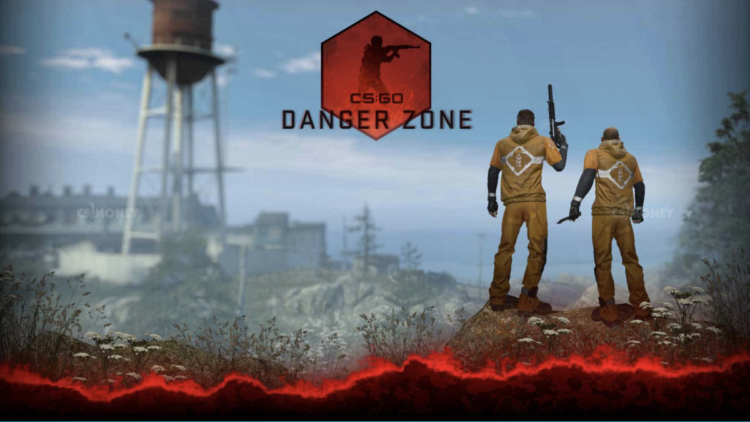
Now, three years after release, Danger Zone is in decline. Almost no one plays the Battle Royale mode — the community prefers the competitive queuing. This is a natural result. For one thing, Valve doesn’t popularize the mode in any way. Since it saw release, there has been only one showmatch in a Major — and this match vividly demonstrated the dynamics-related problem in the late stage of the match.
Second, Danger Zone requires playing in a team now. You can start alone, but all the other participants will probably work in pairs, so you stand zero chance of winning. Third, new content drops at a snail’s pace, even though the innovations themselves are amazing.
Bottom line: it’s a very poor experience. A lot of successful solutions notwithstanding, the Battle Royale mode in Counter-Strike: Global Offensive gets boring very quickly. The main problem, in our opinion, is the gameplay pace. The smooth start quickly turns into a drag, and the player doesn’t even see their opponents most of the time. Saving the mode is simple: the match time needs to be reduced to 5–7 minutes. This would greatly increase the dynamics and tension during the match. As it is though, every match essentially comes down to long aimless wandering around an empty location. Walking simulation is clearly not the gameplay that Danger Zone needs to deliver.
Unfortunately, the Battle Royale mode in Counter-Strike: Global Offensive hasn’t stood the test of time. Their huge stock of great ideas regardless, the development team failed to solve the fundamental problems of the mode and make it an integral part of the game’s ecosystem. However, the CS.MONEY Blog still recommends that you play a couple of games in Danger Zone. It’s an enjoyable experience before it gets boring. And when it does, you can simply give it up, as did most of the game’s community.
Well, if you have nothing to do at CS: GO, then right now we are robbing Santa to pick up your gifts without any formalities. Join me!











